Abstract
Endoscopic procedures have been well-documented in the obesity field, but have not yet reached a sufficient level of evidence as stand-alone methods for treating obesity. It is unclear if they should take over. Although expanding, the array of bariatric surgical techniques does not fully meet the current needs, and there are not enough resources for increasing surgery. Surgery is avoided by a majority of patients, so that less aggressive procedures are necessary. For the time being, relevant endoscopic methods include intra-gastric balloons, gastric partitioning (Endo-plication), and the metabolic field (Endo-barrier). Surgical novelties and basic research are also important contributors owing to their potential combination with endoscopy. Conditions have been listed for implementation of bariatric endoscopy, because innovation is risky, expensive, and faces ethical challenges. A scientific background is being built (e.g., hormonal studies). Some techniques require additional study, while others are not ready but should be priorities. Steps and goals include the search for conceptual similarities and the respect of an ethical frame. Minimally invasive bariatric techniques are not ready for prime time, but they are already being successful as re-do procedures. A time-frame for step-strategies can be defined, and more investments from the industry are mandatory.
Endoscopists are already successful at treating obese patients, who are more at risk of gastrointestinal (GI) diseases such as cancer than the general population, and assessing their GI condition before bariatric surgery. They are also increasingly efficient when helping with postoperative complications such as leaks, stenosis, or weight regain after various bariatric procedures. Moreover, it seems today that they may claim a role in primary treatments of obesity, while purely endoscopic methods are available and upgraded on a regular basis. As recently stated by the American Society for Gastrointestinal Endoscopy (ASGE), endoscopic bariatric therapies offer a viable, safe alternative for patients who have been unsuccessful at weight loss with diet and exercise. They may also be appropriate for patients who are not suitable for, or are unwilling to undergo, a more invasive surgical procedure [1].
If bariatric endoscopy may be viewed as a competitor to bariatric surgery, current trends suggest the development of combined strategies as well as mutual assistance when it comes to procedures that require both endoscopic and surgical skills. Although expanding, the array of bariatric techniques does not meet the current needs of morbidly obese patients (class II to III obesity). Resources for spreading this type of surgery are lacking, while more basic and general procedures are not even available throughout the world. Besides, they are often disregarded by a majority of patients because they are deemed “excessive.” Somehow, futile quarrels and surgical discrepancies are abundant, for example: should we do a hiatal hernia repair in the mean time as a sleeve gastrectomy? Should we only do the regular Roux-en-Y gastric bypass or can we afford the Omega-loop bypass? In the meantime, and paradoxically, bariatric surgery claims to expand its boundaries, for instance taking on class I obesity (International Federation for the Surgery of Obesity and Metabolic Disorders [IFSO] Statement, 2014) [2]. All of this points to the need for less aggressive procedures. Seeking less aggressive strategies requires investments into innovative procedures. They are, however risky, expensive, and face ethical challenges. Several issues have been raised: Should minimally invasive procedures take over? When and how should this happen? Do procedures deriving from metabolic surgery have a priority in this respect?
Endoscopy as an obesity treatment needs the input of other sources. Typical surgical concepts as well as new ones are valuable assets because they make it possible to establish benchmarks and fruitful combinations. One may cite new concepts like digestive neuro-stimulation (theoretically adaptable endoscopically), new operations (e.g., laparoscopic greater curve plication, a debatable procedure, but with highly relevant endoscopic applications; sleeve gastrectomy associated with ileal transposition). New technical approaches are on the spot as well (e.g., single incision laparoscopic surgery, robotic adjunction). Three-dimensional and/or enhanced imagery augment the vision, hence reducing the skills that are required for delicate operations. Last but not least, research is being carried out regarding operations in-between surgery and endoscopy, typically the natural orifice transluminal surgery procedures, e.g., gastro-jejunal anastomosis through stents or magnets.
On the other hand, other fields will contribute to any bariatric procedure, such as patient monitoring (smartsensing) results from the rapidly progressing field of internet on things business. Although in its infancy, the possibility to continuously monitor several health parameters could find potential applications in obese patients, before or after any kind of weight-loss procedure. Coaching tools are not to be ignored in a time when the importance of physical activity is stressed more often (e.g., vibrating platforms).
Biology and pharmacotherapy are the subject of ever ongoing efforts. So far, no drug has challenged the results of surgery, but some are currently being tested and even drugs that have been discarded have been proven useful in combination with bariatric techniques. Moreover, fundamental research has benefited from surgery and could contribute to weight-loss by itself; for instance, microbiota transplantation or brown tissue manipulation.
Several options have been tested since the balloon in the eighties. None of them has yet fulfilled the requirements of a typical bariatric treatment, with sustained weight-loss and regression of comorbidities in the long run. Understandably, they may act as a bridge to more complex surgical procedures and/or attract patients who are not eligible for surgery. Countless procedures have been initiated, but so far very few have met efficacy criteria with published results. They are summarized in Table 1.
(1) Intra-gastric balloons: the initial prototypes were not satisfactory, but since the early nineties one may consider that these devices are reliable. They are usually implanted for 6 months. Only the ORBERA balloon (Apollo Endosurgery Inc., Austin, TX, USA) has been thoroughly reviewed, and was recently analyzed by the ASGE, with a systematic review and meta-analysis using diagnostic and therapeutic thresholds established in 2012 as a part of its preservation and incorporation of valuable endoscopic innovations initiative. Based on a meta-analysis of 17 studies including 1,638 patients, the % excess weight loss (EWL) at 12 months was 25.44% (95% confident interval [CI], 21.47 to 29.4), with three randomized control trials (RCTs; difference in % EWL of 26.9% in favor of balloon over control) [1]. While mostly deemed a safe procedure, one must not forget the adverse events that may occur with a balloon (Fig. 1).
Outside of the familiar and still popular ORBERA, new balloons have been released that aim at longer duration. This can be achieved through refilling the balloon, for instance with the SPATZ balloon (Spatz FGIA Inc., Jericho, NY, USA) [3], or designing a double-balloon volume (DUO-SHAPE Balloon; Reshape, San Clemente, CA, USA) [4]. Perhaps the most interesting devices will be the ones that can be swallowed without endoscopy and anesthesia (OBALON; Obalon Therapeutics, Carlsbad, CA, USA) [5], and even possibly self-excreted (ALLURION-ELIPSE, unpublished data; Allurion Technologies, El Segunto, CA, USA).
(2) Gastric partitioning achieved by endoscopic means is a new concept that might be the most promising. Theoretically a fully stapled pouch such as achieved by surgical means can be transposed through endoscopy. This has even been performed with a device that no longer exists (TOGA; Satiety Inc, Palo Alto, CA, USA) [6]. For the time being, the most promising technique seems to be gastric plication, with two competing devices: USGI-POSE (USGI Inc., San Clemente, CA, USA) and APOLLO-OVERSTITCH (Apollo Endosurgery Inc.). The first one ensures a partial plication with separated transmural stitches and anchors placed along the upper part and the antrum (Fig. 2). The second uses several full-thickness stitches in a triangular pattern, cinched together and repeated along the fundus six to eight times (Fig. 3). Both have been initially tested as re-do procedures for weight-regain after gastro-jejunal bypass, reducing the size of a gastric pouch, and/or gastro-jejunal anastomosis [7]. While the first entails deep and reliable plications, the second ensures a more global shrinking of the lumen with few gaps, and thus may be compared to a bariatric surgical plication (Fig. 4). The most recent and significant experiences with primary cases have been reported by Espinos et al. [8] (USGI) in 2013, and Lopez-Nava et al. [9] (Apollo) in 2015. Espinos et al. [8] reported 45 patients with a follow-up of 6 months. Mean % total body weight loss (TBWL) was 15%. Lopez-Nava et al. [9] reported 50 patients, 13 with a follow-up of more than 1 year. The procedure duration averaged 66 minutes. All patients were discharged within 24 hours, and there were no adverse events. Mean % TBWL was 19.0%±10.8%.
(3) The metabolic field: these techniques aim at mimicking the metabolic effect of the surgical gastric bypass on type 2 diabetes, which relies mostly on duodenal exclusion from food passage. Duodeno-jejunal bypass-sleeve (DJBS), also called Endo-barrier (Fig. 5), has been the most studied of the new devices for the past few years, and has also elicited a comprehensive report from the ASGE. It consists of a 60 cm jejunal tube that is anchored to the proximal duodenum and retrieved 12 months later. Three studies including 105 patients have shown a % EWL of 35.3% at 12 months, and four RCTs showed a difference in % EWL of 9.4% in favor of DJBS [1]. The experimental technique of duodenal resurfacing aims to achieve the same goal.
(4) Other devices can be mentioned but have not yet generated enough data: the Endo-ASPIRE consists of an endoscopically-placed gastrostomy tube and siphon assembly [10]. The food is conveniently stored and then flushed. Patients aspirate gastric contents 20 minutes after meal consumption, removing about 30% of ingested calories. Trans-pyloric materials are also being experimented with, as well as various intra-luminal restrictive devices.
(1) Conditions can be listed, that mostly pertain to occasional circumstances. Companies and physicians alike have to overcome numerous barriers, which are present throughout the development process. Regarding endoscopic devices, these barriers are particularly important. Many events are in a position to kill an innovative device: If the market has not been clearly identified, or is too small, sales will not meet the expectations; likewise if the device is too complex, or too expensive for its application. Many interesting devices can be stalled if investors do not want to finance inevitable delays or if regulatory bodies request additional trials. Clinical results may not pass reimbursement thresholds. The adoption of a new device can take longer than anticipated, and training for experienced physicians might be complicated. Last but not least, any startup can be purchased by a major company in order to eliminate competition.
(2) A strong scientific background regarding bariatric endoscopy is being built. For instance, hormonal studies are already available [11,12], which suggest more or less strong metabolic effects that could match those of surgery. This will allow for valid comparisons between endoscopic and surgical techniques. De Jonge et al. [11] have shown that after 24 weeks of implantation of the Endo-Barrier, patients had lost 12.7±1.3 kg (p<0.01), while hemoglobin A1c had improved from 8.4%±0.2% to 7.0%±0.2% (p<0.01). Both fasting glucose levels and the postprandial glucose response were decreased at 1 week after implantation and remained decreased at 24 weeks. In parallel, the glucagon, glucagon-like peptide 1, and glucose-dependent insulinotropic hormone responses decreased and insulin levels did not change significantly [11]. Mathus-Vliegen and de Groot [12] have studied the effects of a balloon in 42 patients. In group 1, basal cholecystokinin (CCK) levels decreased but meal-stimulated responses remained unchanged after 13 weeks of sham treatment. In group 2, basal and meal-stimulated CCK levels decreased after 13 weeks of balloon treatment. At the end of the second 13-week period, when group 1 had their first balloon treatment, they duplicated the initial 13-week results of group 2, whereas group 2 continued their balloon treatment and reduced meal-stimulated CCK release. Both groups showed reduced meal-stimulated pancreatic polypeptide (PP) secretions at T1 and T2 compared to T0. Changes in diet composition and VAS scores were similar. Improvements in glucose homeostasis partly explained the PP results [12].
(3) One may consider techniques that are ready but require additional studies, e.g., Endo-barrier, Endoplication, and Endo-ASPIRE. On the other hand, some are not yet available (or not anymore) but they could become a priority provided research is carried out, e.g., Endo-rings (TERIS device; Barosense, Menlo Park, CA, USA) [13], Endo-stapling (ACE method; Boston Scientific Corporation, Natick, MA, US) [14], Transpyloric Shuttle (BAROnova, Goleta, CA, USA) [15], the Satisphere method [16], and duodenal resurfacing (FRACTYL, unpublished data; Fractyl, Waltham, MA, USA).
(4) Facing the criticism of those in favor of surgery for everyone is not the least important issue! The current and most common position from the bariatric surgical community states that the efficacy, durability, and long-term clinical utility of endoscopic procedures remain to be established [2]. Although essentially true, this statement overlooks the fact that a majority of obese patients eligible for surgery reject these procedures and/or do not have access to them.
A breakthrough from the basic research field is highly anticipated, and could come from any biological/drug research. Unfortunately, it is not likely soon. The implementation of stepwise strategies, making use of new and old techniques, some endoscopic, some surgical, represents what is actually done for the time being. Conceptual similarities are useful when figuring out such strategies. Likewise, adjacent technologies (e.g., smartsensing for monitoring, or the development of robotic platforms useful for endoscopy and surgery alike) could be proven instrumental. Solutions are currently tested under many forms.
We may also assume that one “good shot” could be enough in the near future, i.e., the success of a single endoscopic device among those that are currently being tested. This could come from one of the available tools. Among the devices presented above or under development, we feel entitled to select three that are particularly promising: (1) the new balloons, e.g., swallowable ones; (2) the endoscopic plication; and (3) the metabolic asset Sleeve Endobarrier.
(1) The ethical frame should be kept in mind all along. According to the American Society for Metabolic and Bariatric Surgery, the implementation of such new devices should be limited to clinical trials and peer-reviewed protocols [17].
(2) For the time being, most of the current techniques that fit into this description have rather short-term effects, which are strongly influenced by external factors in a much more important way than regular bariatric surgeries. Atypical weight-loss trajectories may be observed more often in minimally invasive methods that achieve less important weight-loss. Short-term effects may be described under the term “micro-trajectories”: 3- to 6-month periods are commonly analyzed in this field versus 1 year-period in typical surgical procedures. Micro-trajectories cannot be predicted the same way regular surgical trajectories are. The existence of an “on-off” pattern (the device being active or not for a variable duration) makes it more complex to analyze weight-loss curves. Such an effect can be observed in typical surgical procedures as well (e.g., gastric banding, gastric neuro-stimulation). Paradoxically, weight-loss may be de-connected to the “on-off” pattern in some cases; for instance, some patients continue losing weight when a balloon has been removed. Should we introduce new methods of evaluation when it comes to minimally invasive techniques? Can we define the causes of atypical trajectories (possibly control effects, center effects, or behavioral effects)? Caution is in order when evaluating the benefits of a given technique and its safety profile, and when designing the methods for RCTs of obesity treatment.
Most minimally invasive or endoscopic techniques for obesity treatment are not ready for prime time and require more observational or randomized studies, at least concerning primary procedures. However, they are already being successful as re-do procedures in cases of surgical failure. A time-frame for step-strategies can be defined, allowing better long-term results and a favorable risk/benefit ratio. One must advise caution and warn that re-do after endoscopic techniques might be more difficult than anticipated.
Keeping in mind a “bariatric schedule” and the necessity of experimenting with combinations, we assume that one success among some of the current devices that are being developed and tried could change our expectations, and attract investors.
REFERENCES
1. ASGE Bariatric Endoscopy Task Force and ASGE Technology Committee, Abu Dayyeh BK, Kumar N, et al. ASGE Bariatric Endoscopy Task Force systematic review and meta-analysis assessing the ASGE PIVI thresholds for adopting endoscopic bariatric therapies. Gastrointest Endosc. 2015; 82:425–438. e5.

2. Busetto L, Dixon J, De Luca M, Shikora S, Pories W, Angrisani L. Bariatric surgery in class I obesity: a position statement from the International Federation for the Surgery of Obesity and Metabolic Disorders (IFSO). Obes Surg. 2014; 24:487–519.
3. Brooks J, Srivastava ED, Mathus-Vliegen EM. One-year adjustable intragastric balloons: results in 73 consecutive patients in the U.K. Obes Surg. 2014; 24:813–819.

4. Ponce J, Quebbemann BB, Patterson EJ. Prospective, randomized, multicenter study evaluating safety and efficacy of intragastric dual-balloon in obesity. Surg Obes Relat Dis. 2013; 9:290–295.

5. Mion F, Ibrahim M, Marjoux S, et al. Swallowable Obalon(R) gastric balloons as an aid for weight loss: a pilot feasibility study. Obes Surg. 2013; 23:730–733.
6. Deviere J, Ojeda Valdes G, Cuevas Herrera L, et al. Safety, feasibility and weight loss after transoral gastroplasty: first human multicenter study. Surg Endosc. 2008; 22:589–598.

7. Horgan S, Jacobsen G, Weiss GD, et al. Incisionless revision of post-Roux-en-Y bypass stomal and pouch dilation: multicenter registry results. Surg Obes Relat Dis. 2010; 6:290–295.

8. Espinos JC, Turró R, Mata A, et al. Early experience with the Incisionless Operating Platform (IOP) for the treatment of obesity: the Primary Obesity Surgery Endolumenal (POSE) procedure. Obes Surg. 2013; 23:1375–1383.
9. Lopez-Nava G, Galvão MP, Bautista-Castaño I, Jimenez-Baños A, Fernandez-Corbelle JP. Endoscopic sleeve gastroplasty: how I do it? Obes Surg. 2015; 25:1534–1538.

10. Sullivan S, Stein R, Jonnalagadda S, Mullady D, Edmundowicz S. Aspiration therapy leads to weight loss in obese subjects: a pilot study. Gastroenterology. 2013; 145:1245–1252. e1-5.

11. de Jonge C, Rensen SS, Verdam FJ, et al. Endoscopic duodenal-jejunal bypass liner rapidly improves type 2 diabetes. Obes Surg. 2013; 23:1354–1360.

12. Mathus-Vliegen EM, de Groot GH. Fasting and meal-induced CCK and PP secretion following intragastric balloon treatment for obesity. Obes Surg. 2013; 23:622–633.

13. de Jong K, Mathus-Vliegen EM, Veldhuyzen EA, Eshuis JH, Fockens P. Short-term safety and efficacy of the Trans-oral Endoscopic Restrictive Implant System for the treatment of obesity. Gastrointest Endosc. 2010; 72:497–504.

14. Verlaan T, Paulus GF, Mathus-Vliegen EM, et al. Endoscopic gastric volume reduction with a novel articulating plication device is safe and effective in the treatment of obesity (with video). Gastrointest Endosc. 2015; 81:312–320.

15. Marinos G, Eliades C, Muthusamy V, et al. First clinical experience with the transpyloric shuttle device, a non-surgical endoscopic treatment for obesity: results from a 3-month and a 6-month study. In : Proceedings of the SAGES 2013; 2013 Apr 17-20; Baltimore, MD, USA. Los Angeles, CA: SAGES;2013.
16. Sauer N, Rösch T, Pezold J, et al. A new endoscopically implantable device (SatiSphere) for treatment of obesity: efficacy, safety, and metabolic effects on glucose, insulin, and GLP-1 levels. Obes Surg. 2013; 23:1727–1733.
17. Emerging Technologies and Clinical Issues Committees of the ASMBS. American Society for Metabolic and Bariatric Surgery Position Statement on emerging endosurgical interventions for treatment of obesity. Surg Obes Relat Dis. 2009; 5:297–298.
Fig. 3.
Immediate postoperative X-ray control after an OVERSTITCH (Apollo Endosurgery Inc.) procedure.
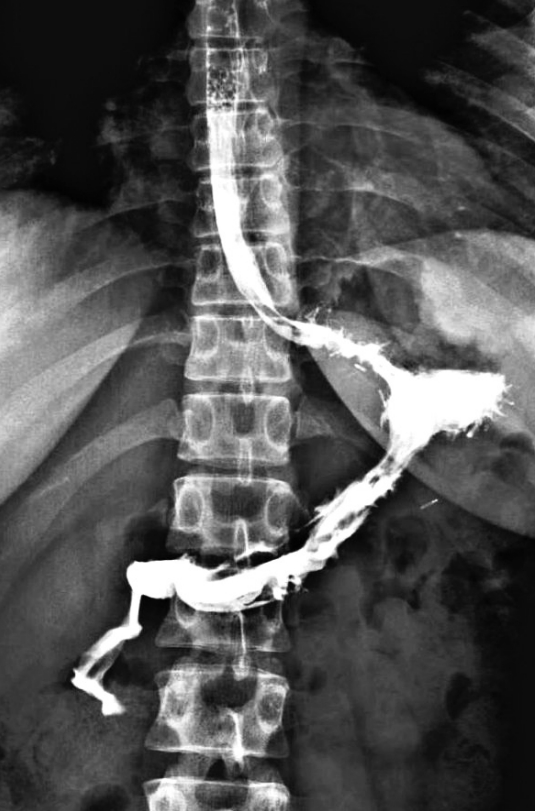
Table 1.
Current Endoscopic Devices for Obesity Treatment
| Type of endoscopic bariatric devices | Clinical evidence/efficacy (0 to +++) | Active/promotea) (yes/no) | Adverse eventsb) (0 to +++) | Attractivenessc) (0 to +++) |
|---|---|---|---|---|
| Obstructing/emptying | ||||
| Intra gastric balloon (ORBERA) | +++ | Y | ++ | ++ |
| Swallowable balloons | + | N | + | +++ |
| Refilling-balloons | ++ | Y | + | ++ |
| Duo-shape balloon | ++ | Y | + | ++ |
| Trans-pyloric shuttle | 0 | N | + | + |
| Satisphere | 0 | N | + | + |
| Endo-aspire | + | Y | + | + |
| Partitioning | ||||
| POSE | ++ | Y | + | ++ |
| OVERSTITCH | ++ | Y | + | +++ |
| TOGA | ++ | N | + | +++ |
| ACE | + | N | + | ++ |
| TERIS | 0 | N | + | + |
| Metabolic | ||||
| Endo-barrier | ++ | Y | ++ | ++ |
| Fractyl | 0 | N | ? | ++ |
| Magnet jejuno-ileal bypass | 0 | N | ? | ++ |
| Bypass failures | ||||
| Partitioning and anastomosis reduction (various devices included above) | +++ | Y | + | +++ |
The comments and notations reflect the author’s opinion in 2015, in the absence of conclusions from a consensus panel.




 PDF
PDF Citation
Citation Print
Print


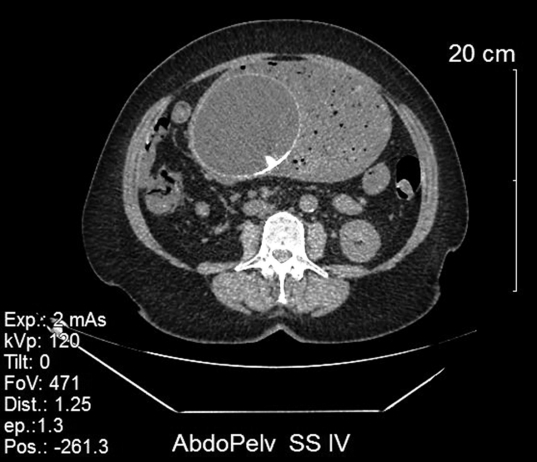
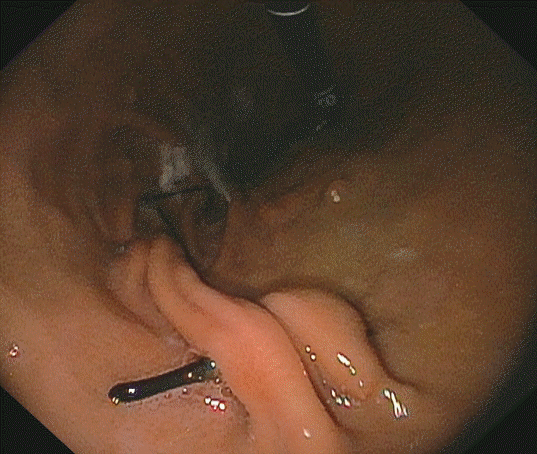
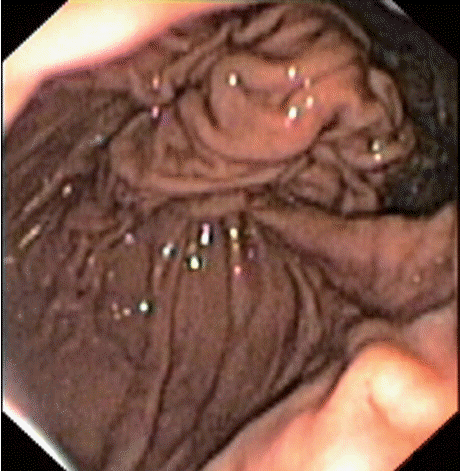
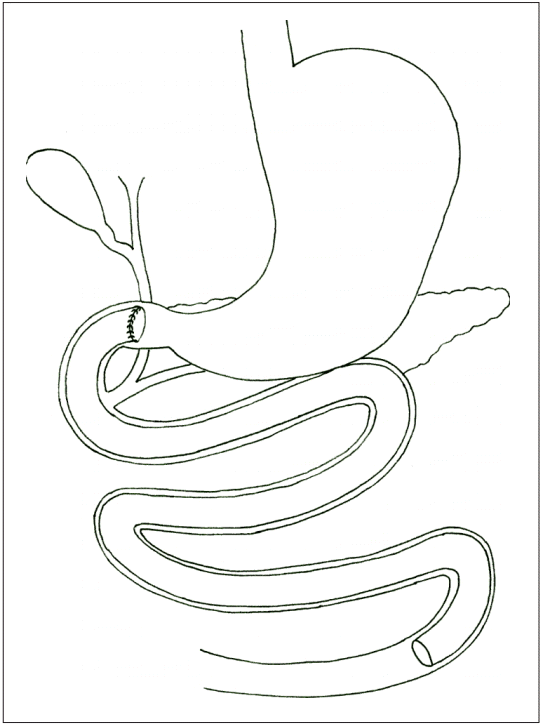
 XML Download
XML Download